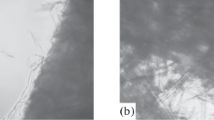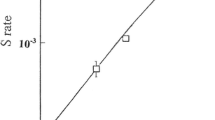Abstract
Methodology is described to enrich for heterokaryons after mammalian cell fusion. A heterogeneous cell mixture can be separated on a Sta-Put apparatus into fractions of uniform size cells by sedimentation through a 1% bovine serum albumin-5% Ficoll gradient. Unfused RAG and LM/TK− cells, differing by 10% in diameter, have been sorted by size; following fusion, larger and faster sedimenting cells were shown to be hybrids. This methodology can be utilized in genetic complementation studies of human genetic diseases where selection procedures for proliferating hybrids do not exist. When fibroblasts from individuals with Tay-Sachs disease [deficient in hexosaminidase A (HEX A−)] and Sandhoff-Jatzkewitz disease (HEX A− and HEX B−) are fused, HEX A is generated, demonstrating complementation of two different mutations. After Sta-Put fractionation, the HEX A complementation product was associated with the faster sedimenting multinuclear cells and not with the mononuclear parental cells. This methodology will facilitate detection of genetic differences in fibroblasts from related inherited disorders.
Similar content being viewed by others
Literature cited
O'Brien, J. S. (1978). InThe Metabolic Basis of Inherited Disease, (eds.) Stanbury, J. B., Wyngaarden, J. B., and Fredrickson, D. S. (Mc Graw-Hill, New York), pp. 841–865.
Galjaard, H., Hoogeven, A., de Wit-Verbeek, H. A., Reuser, A. J. J., Keijzer, W., Westerveld, A., and Bootsma, D. (1974).Exp. Cell Res. 87:444–448.
Okada, S., and O'Brien, J. S. (1968).Science 165:698–700.
Sandhoff, K., Andreae, U., and Jatzkewitz, H. (1968).Life Sci. 7:278–285.
Rattazzi, M. C., Brown, J. A., Davidson, R. G., and Shows, T. B. (1976).Am. J. Human Genet. 28:143–154.
McKusick, V. A. (1972).Heritable Disorders of Connective Tissue, 4th ed. (Mosby, St. Louis), pp. 521–686.
Leroy, J. G., Spranger, J. W., Feingold, M., Opitz, J. M., and Crocker, A. C. (1971).J. Pediatr. 79:360–365.
Kelly, T. E., Thomas, G. H., Taylor, H. A., McKusick, V. A., Sly, W. S., Glaser, J. H., Robinow, M., Luzzatti, L., Espiritu, C., Feingold, M., Bull, M. J., Asenhurt, E. M., and Ives, E. J. (1975).Johns Hopkins Med. J. 137:156–175.
Fincham, J. R. S. (1966).Genetic Complementation (W. A. Benjamin, Inc., New York).
Ephrussi, B. (1972).Hybridization of Somatic Cells (Princeton University Press, Princeton, New Jersey).
Kraemer, K. H., Coon, H. G., Petinga, R. A., Barrett, S. F., Rake, A. E., and Robbins, J. H. (1975).Proc. Natl. Acad. Sci. U.S.A. 72:59–63.
Kao, F.-T., Chasin, L., and Puck, T. T. (1969).Proc. Natl. Acad. Sci. U.S.A. 64:1284–1291.
Okada, Y. (1962).Exp. Cell Res. 26:98–107.
Davidson, R. L., O'Malley, K. A., and Wheeler, T. B. (1976).Somat. Cell Genet. 2:271–280.
Miller, R. G., and Phillips, R. A. (1969).J. Cell. Physiol. 73:191–202.
Miller, R. G. (1973). InNew Techniques in Biophysics and Cell Biology Vol. 1, (eds.) Pain, R. H., and Smith, B. J. (John Wiley and Sons, New York), pp. 87–113.
Meistrich, M. L. (1977).Methods Cell Biol. 15:15–54.
MacDonald, H. R., and Miller, R. G. (1970).Biophysics J. 10:834–842.
Simons, J. W. (1967).Exp. Cell Res. 45:336–350.
Harris, H., and Watkins, J. F. (1965).Nature 205:640–646.
Gravel, R. A., Mahoney, M. J., Ruddle, F. H., and Roseberg, L. E. (1975).Proc. Natl. Acad. Sci. U.S.A. 72:3181–3185.
Karig Hohmann, L., and Shows, T. B. (1978).J. Cell Biol. 79:387a.
Klebe, R. J., Chen, T. R., and Ruddle, F. H. (1970).J. Cell Biol. 45:74–82.
Kit, S., Dubbs, D. R., Pietzarski, L. J., and Hsu, T. C. (1963).Exp. Cell Res. 31:297–312.
Peterson, E. A., and Evans, W. H. (1967).Nature 214:824–825.
Pretlow, T. G., Boone, C. W., Shrager, R. I., and Weiss, G. H. (1969).Anal. Biochem. 29:230–237.
Crissman, H. A., Mullaney, P. F., and Steinkamp, J. A. (1975).Methods Cell Biol. 9:179–246.
Crissman, H. A., and Tobey, R. A. (1974).Science 184:1297–1298.
Champion, M. J., and Shows, T. B. (1977).Proc. Natl. Acad. Sci. U.S.A. 74:2968–2972.
Shows, T. B., Ruddle, F. H., and Roderick, T. H. (1969).Biochem. Genet. 3:25–35.
Carter, W. D., Parr, C. W. (1967)Nature 216:511.
Roderick, T. H., Ruddle, F. H., Chapman, V. M., and Shows, T. B. (1971).Biochem. Genet. 5:457–466.
Shows, T. B. (1978). InIsozymes: Current Topics in Biological and Medical Research, Vol. 2, (eds.) Rattazzi, M., Scandalios, J., and Whitt, G., (Alan R. Liss, New York), pp. 107–158.
Sanderson, R. J., and Bird, K. E. (1977).Methods Cell Biol. 15:1–14.
Hoehn, H., Bryant, E. M., Johnston, P., Norwood, T. H., and Martin, G. M. (1975).Nature 258:608–610.
Bont, W. S., and Hilgers, J. H. M. (1977).Prep. Biochem. 7:45–60.
Schor, S. L., Johnson, R. T., and Mulliger, A. M. (1975).J. Cell Sci. 19:281–303.
Chang, P. L., Joubert, G. I., and Davidson, R. G. (1979).Nature 278:168–170.
Author information
Authors and Affiliations
Rights and permissions
About this article
Cite this article
Hohmann, L.K., Shows, T.B. Complementation of genetic disease: A velocity sedimentation procedure for the enrichment of heterokaryons. Somat Cell Mol Genet 5, 1013–1029 (1979). https://doi.org/10.1007/BF01542657
Received:
Issue Date:
DOI: https://doi.org/10.1007/BF01542657




